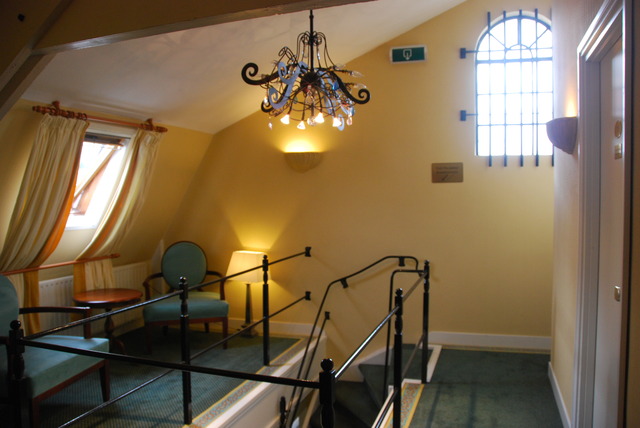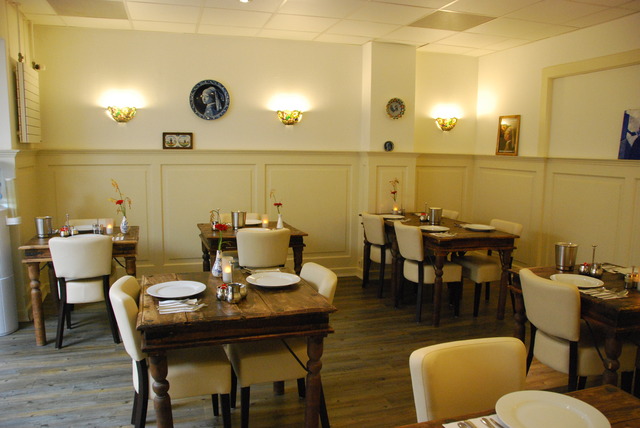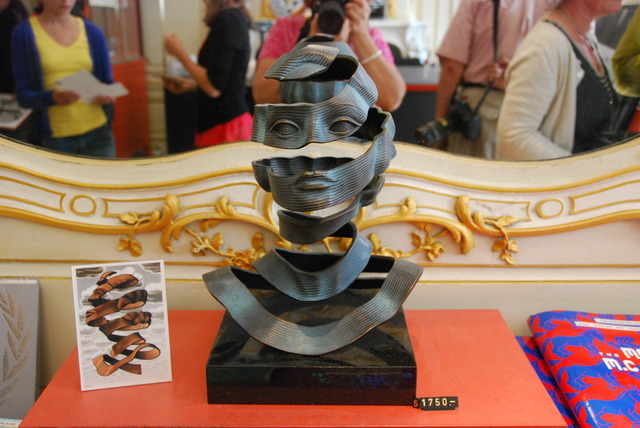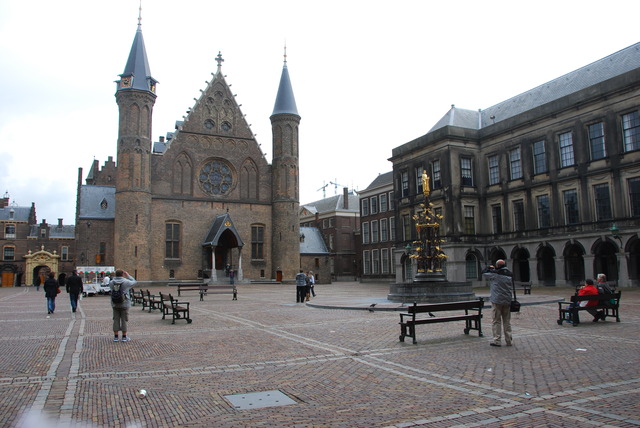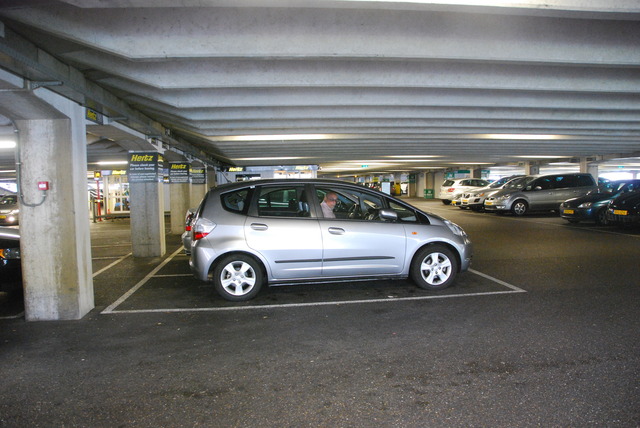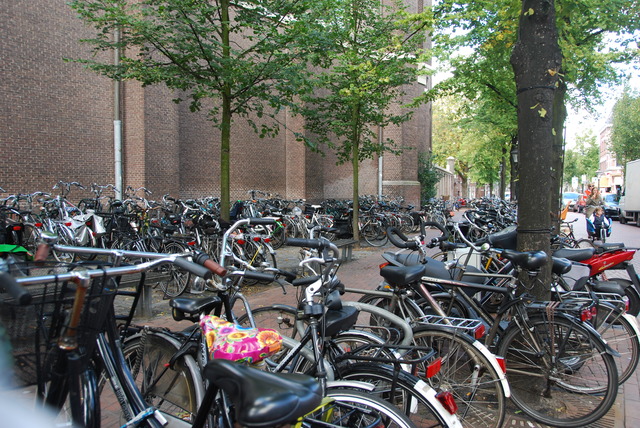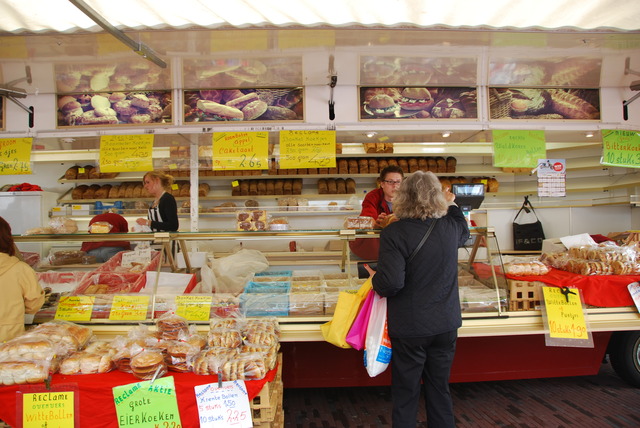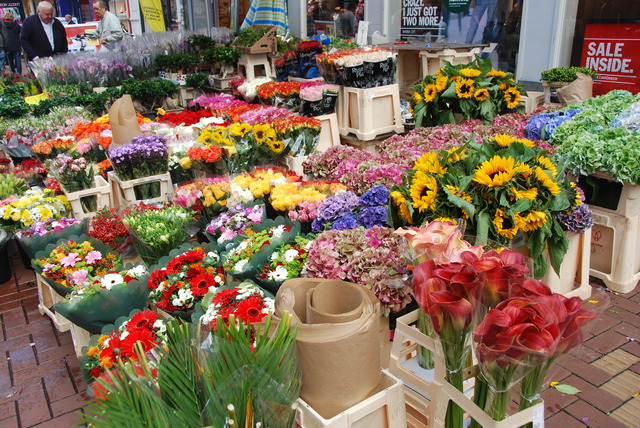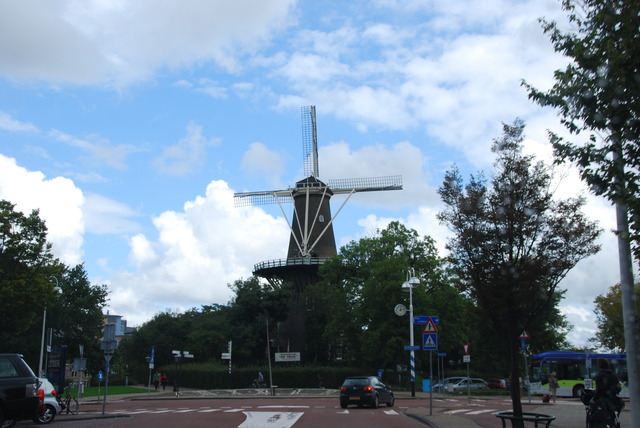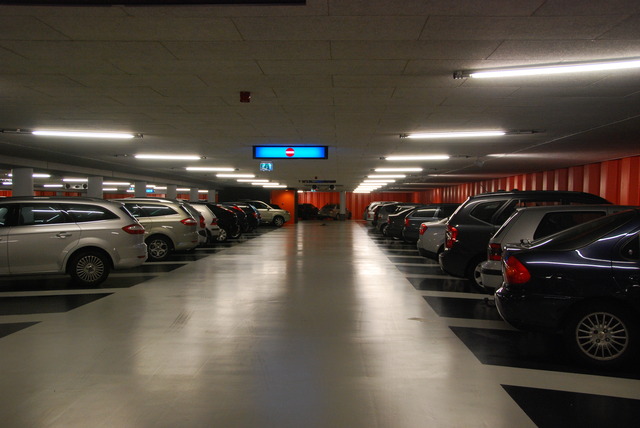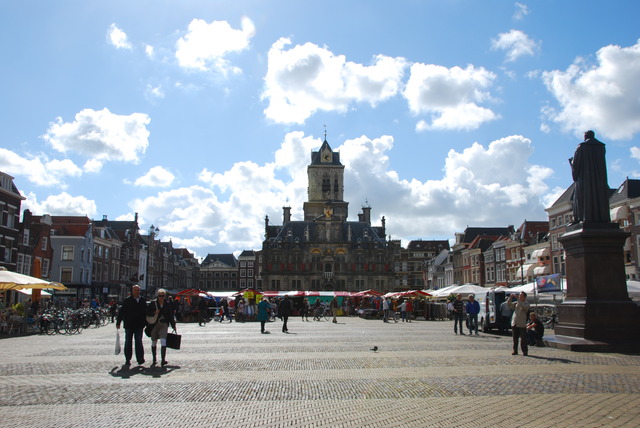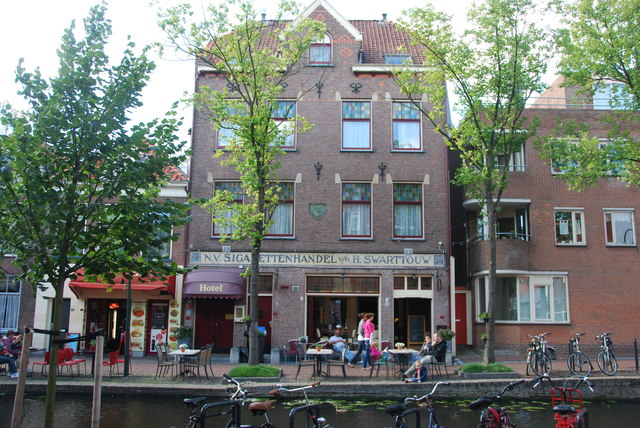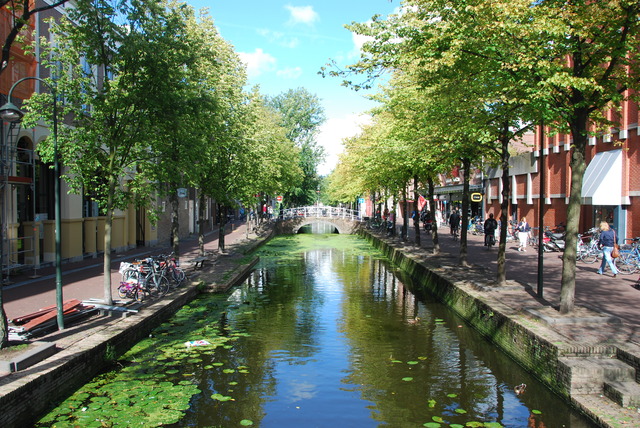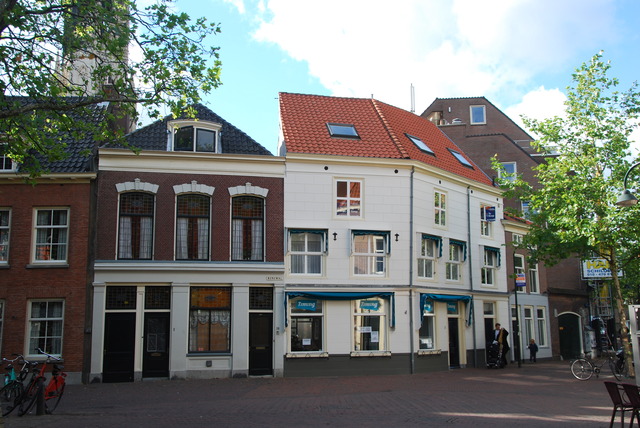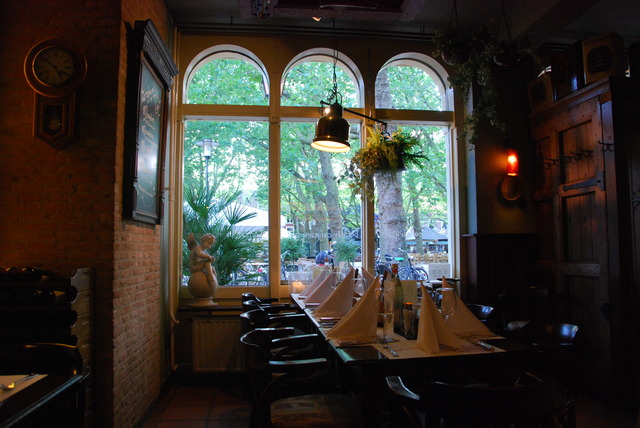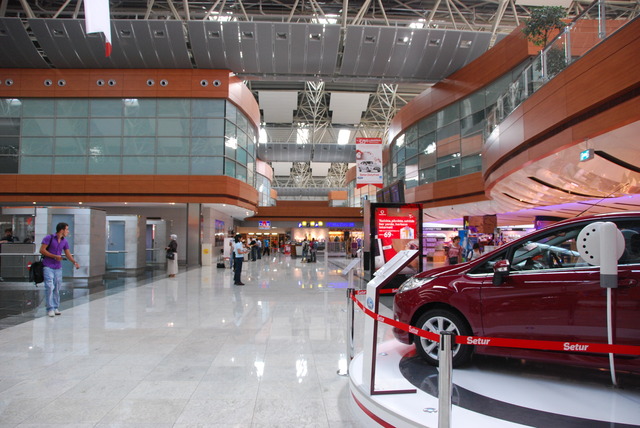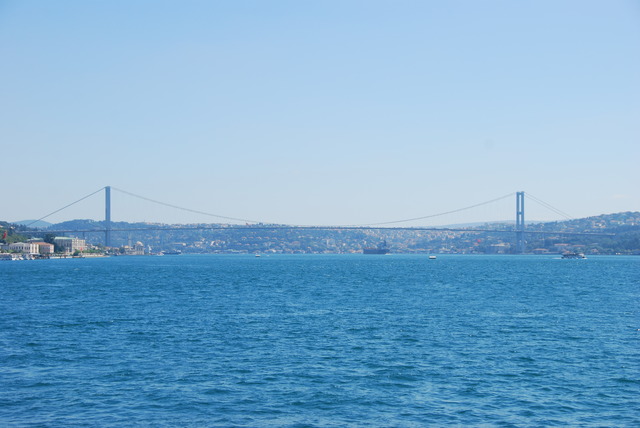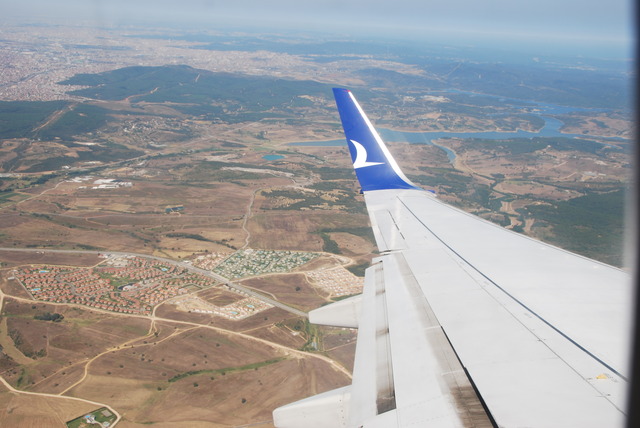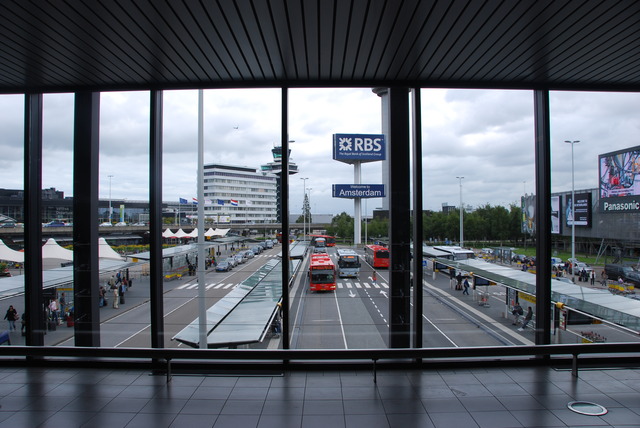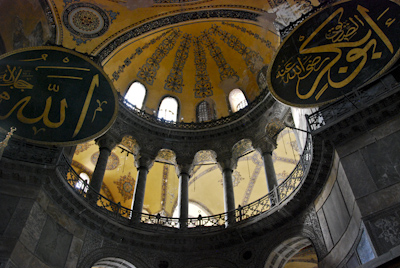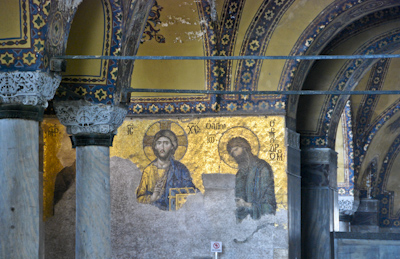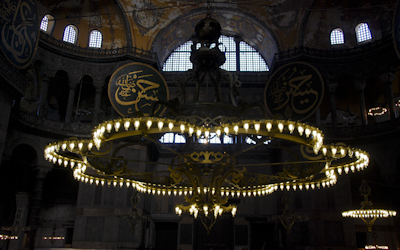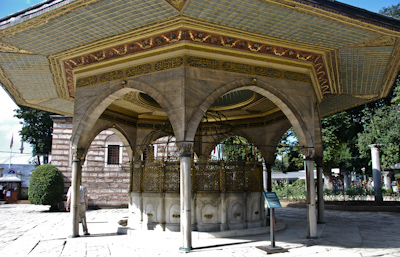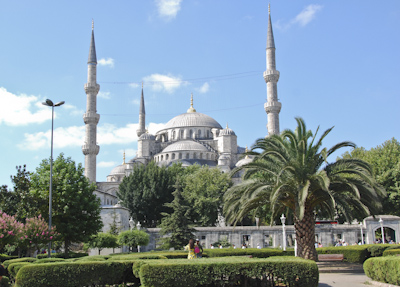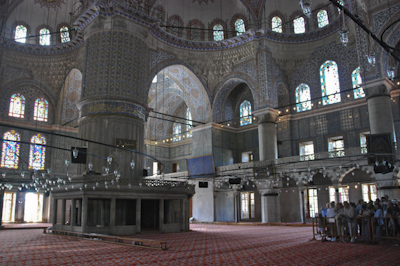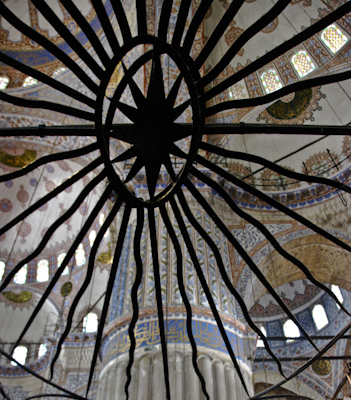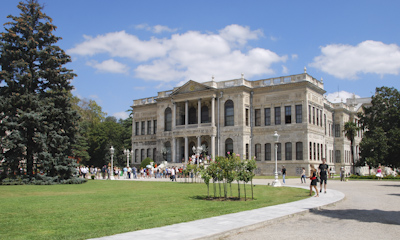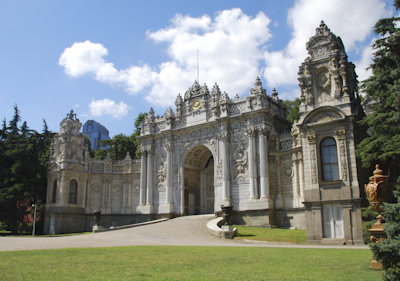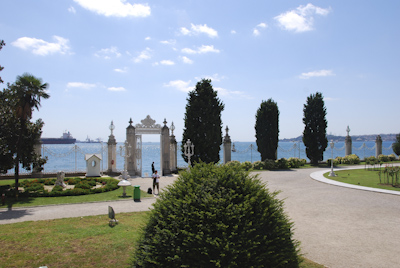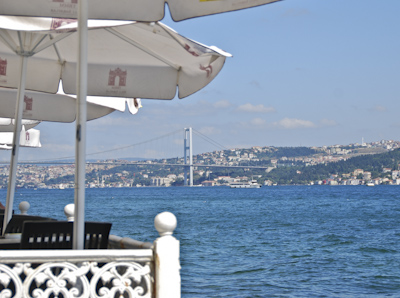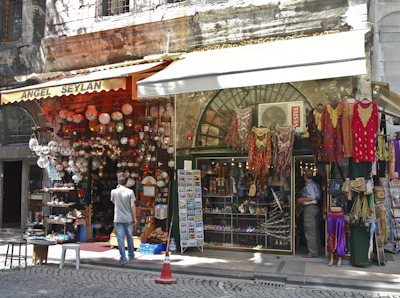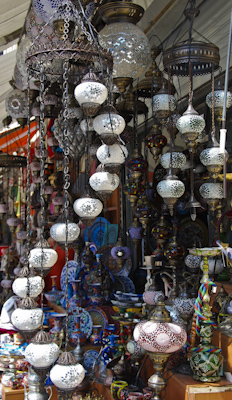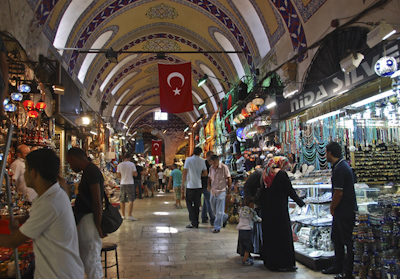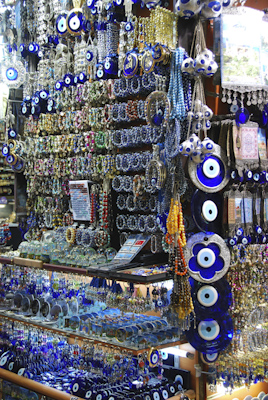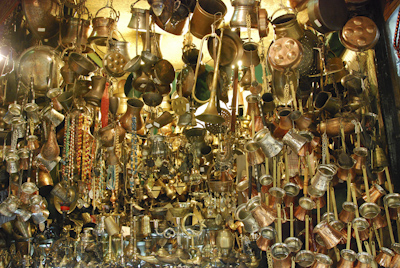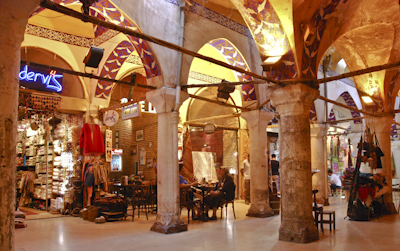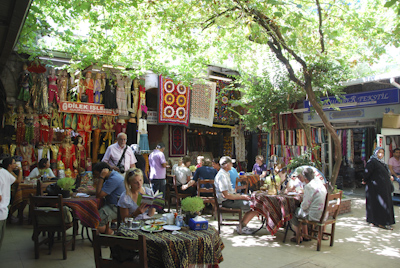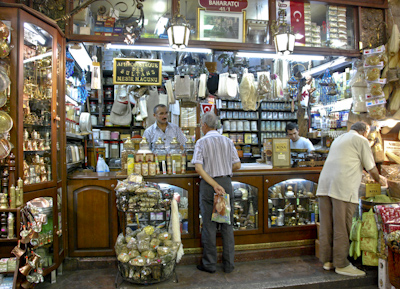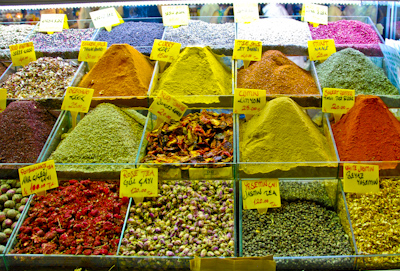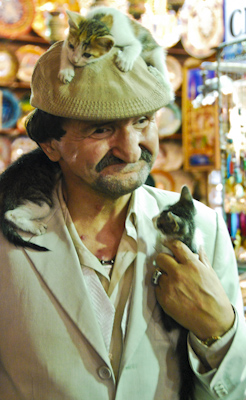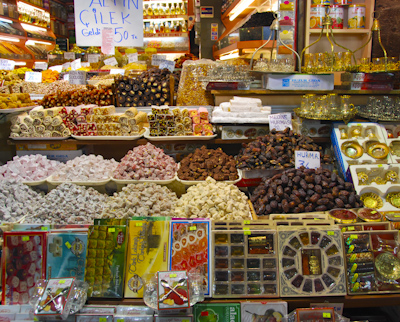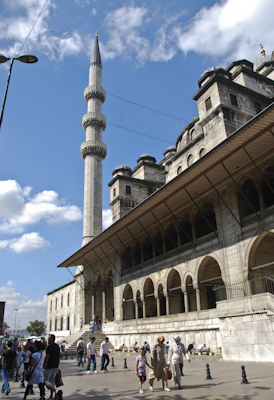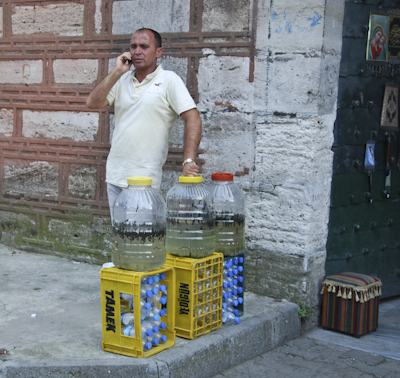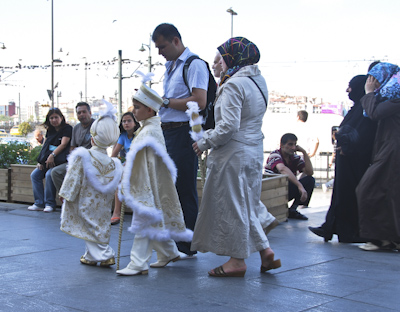Sunday, August 29 – overcast, windy, raining & cool: I had slept well despite the clanging of the old church bells during the night. The dull sound reminded me of the church bells on Christmas Eve in Florence several years back. The old bells clang the hours and mark the services. They have brought glad tidings and bad news to the townsfolk for hundreds of years.
Interior Hallway of Johannes Vermeer hotel
We were very pleasantly surprised by the abundant breakfast at the Johannes Vermeer Hotel. Like most of Europe, breakfast is free with a night’s lodging and it varies from country to country and hotel to hotel. I think it’s a very humanistic gesture to send out the hotel guests into the tourist world with a full stomach. Johannes Vermeer outdid himself with excellent coffee, croissants, cheeses, meats, eggs, yoghurt, and fresh fruit.
The Breakfast Room at Hotel Johannes Vermeer
Over breakfast, we had an excellent conversation with an Australian couple who were in Delft to try out hotels for a future Dutch boat tour that the man was developing. He said they were touring Holland by inter-connecting canals in a small boat but were stopping at hotels each night. Next year he is planning to charter a larger boat and invite Australian tourists (for a fee) on the journey. He said it will be a “good retirement job”.
We decided to stay at the Johannes Vermeer Hotel because we wanted a hotel to serve as a base to visit other cities with easy access to the major roads in this part of Holland. The Johannes Vermeer was a lovely little hotel for one night but was centrally located in Delft and accessible only on foot. It would have been very difficult for us to carry our suitcases up flights of circular staircases.
We had noticed a modern hotel on the street leading into Delft near the parking garage, so walked there to inquire about a room for two nights. The Hampshire Hotel, we learned, had opened in April 2010 and many of their 92 rooms were available. We took a very comfortable large double room for 99 Euros per night.
Except for the Britney Spears quotation painted on the wall over the bed, the room was perfect. I feel a bit guilty for preferring a crisp, clean, quiet, modern room, but with breakfast and free WiFi, I’m getting over it!
We got our little silver Honda Jazz out of the garage and drove 15 minutes to Den Haag, “the Hague”, in English. This is the business and commerce center of Holland. There was little traffic because it was Sunday but we still had difficulty finding the “Centrum” without a map or guidebook.
We finally found a garage near the Tourist Information Office, parked the car, and bought the much needed Michelin Guide to Holland and a book of maps of the small country. We then had a cup of coffee in the adjoining coffee shop, and since it was a rainy day, decided to go to a couple of museums that Jeff knew about.
Binnenhof – Knights’ Hall Within Dutch Parliament Buildings
The first was the Mauritshuis which was a converted Dutch mansion and exhibited an impressive collection of Dutch paintings. There were three floors around a large center staircase and one could imagine the lifestyle of the former occupants. It was a relatively small collection, but exhibited almost a dozen Rembrandts and two of Johannes Vermeer’s best paintings. One was a glowing view of the city of Delft, where Vermeer had lived his entire life. The other painting was the popular Girl With the Pearl Earring. Both are magnificent paintings and worth the visit to see them. The Rembrandt paintings included several which we had not seen and reflected the range of Rembrandt’s talents and interests. No photography was allowed inside the museum and it was raining too hard to take photos outside.
It was pouring rain when we left the Mauritshuis and we expressed our good fortune to find waterproof rain jackets the day before at the street market in Leiden. We consulted our Den Haag city map and found our way to the other museum: Escher in Het Paleis. This is a permanent exhibit of the works of the world-famous Dutch graphic artist, M. C. Escher housed in the 200 year old winter palace of the current queen’s great-grandmother: Queen Mother Emma. Yes, there is a royal family and a present-day queen of modern Holland, Queen Beatrix.
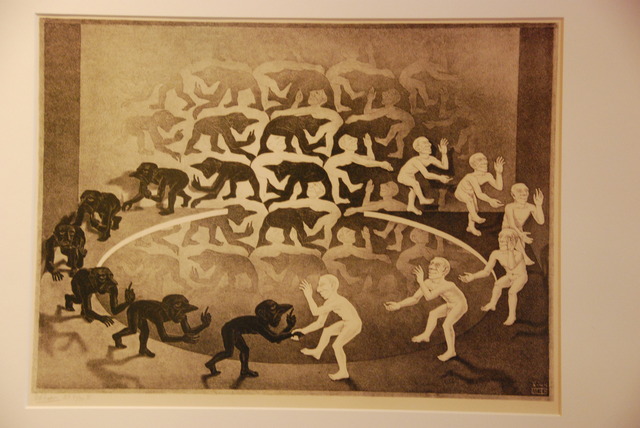 Photograph of One of M. C. Escher’s Works
Photograph of One of M. C. Escher’s Works
Everyone recognizes Escher’s work even if they don’t remember his name. The exhibit dominated the entire house and described Escher’s art from his youth to his popularity “with Americans” in the 1950s and 1960s. He died in 1972 but his works are just as fresh and interesting and innovative as when he created them. On the top floor were computer simulations and hands-on experiential activities for visitors based on Esher’s graphics.
It was still very windy and raining hard when we left the Escher exhibit and we walked back through a park to the garage. I have just one word about European parking garages: OUCH!! They’re too small for any normal-sized automobile, so DO NOT enter any indoor garage with a car larger than an American Honda Civic or you will not be able to park, fortunately this Jazz is a small car.
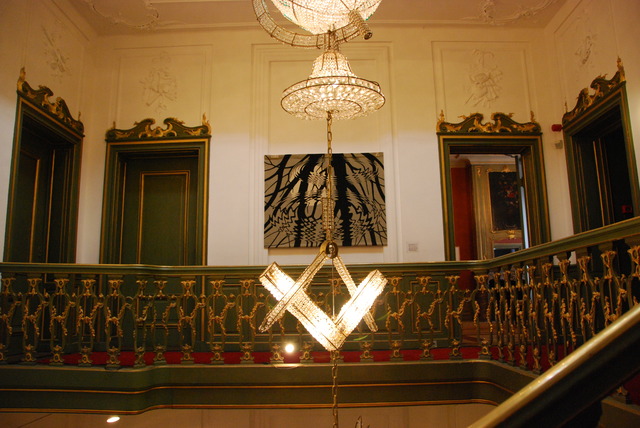 Interior Staircase of the Winter Palace With a Modern Chandelier
Interior Staircase of the Winter Palace With a Modern Chandelier
We drove back to the Hampshire Hotel and settled in for the evening. Another advantage to the hotel is their dining room. We didn’t have to walk in the pouring rain to find a restaurant with good food. I had a delicious Dutch lamb dinner and Jeff was finally able to enjoy a good hamburger!
